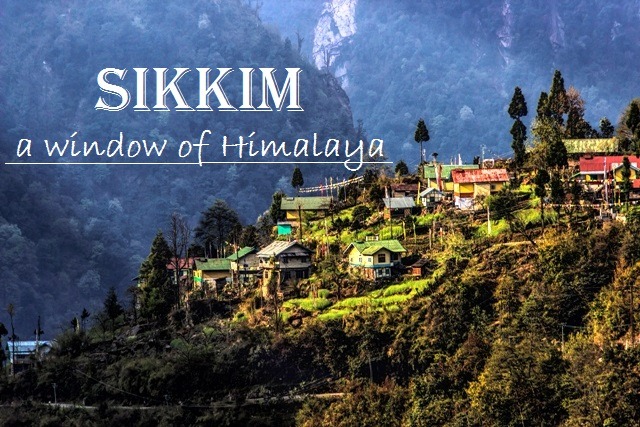Ma-MA MIAA. INDIAN FOOD CULTURE!
INDIA’s FOOD CULTURE has evolved over thousands of years, blending ancient practices with modern twists. India has the world’s second largest population. Today, India has various cultures, beliefs, lifestyles, and the blend of almost everything present in the world; one of the oldest cultures of the world is present in India with the latest touch. The youth is the pillar of the country’s financial regulation, with so many religions and equal rights to all of them which makes India one of the unique subcontinents on this planet.
No matter where you are in India, you will find a unique taste of their culture in every little thing. With 29 states and seven union territories, each with distinct cultures, lifestyles, and food, hundreds of different dishes and drinks await to mesmerize every food lover.
What You Need To Know About of Indian Food Culture

Indian Food Culture is deeply intertwined with the country’s heritage and culinary traditions. People in India are crazy about food—they are the real food lovers. Each home in India carries that special aroma of ‘tadka’. From bustling streets to five-star hotels, food here is prepared with passion and joy. Let’s delve deeper into the regional flavors that make Indian Food Culture so remarkable.
Regional Culinary Highlights of Indian Food Culture
North Indian Cuisine
While travelling to North India, the most advisable dishes to try include Chole Bhature from Amritsar, Delhi’s chat, Rajasthani Dal-bati, and Kashmiri Rogan Josh. The Kashmiri spices are eye-watering, and Indians know the best way to use them. In Punjab, you will never be able to leave a place without being offered a GIGANTIC glass of Lassi. North Indian cuisine incorporates a maximum amount of dairy products such as milk, paneer, ghee, and yoghurt, alongside a vast array of chicken dishes. “Makke di Roti and Sarso da Saag” make everyone’s mouth water. For further details on North Indian culinary traditions, visit Wikipedia on Indian Cuisine.
South Indian Cuisine
Moving towards South, the “Hyderabadi Biriyani” and various Hyderabadi meat dishes are among the most beloved in Indian Food Culture. In Southern regions, you will also encounter an extensive variety of seafood. Kerala offers special cuisines such as olan, sambar, rasam, nendarangai chips, paalpradaman, aviyal, pulissery, erucherri, kalan, upperis, pachady, and kichadi. Non-vegans can delight in the multiple varieties of fish curries and other meat-based dishes that characterize South Indian culinary art.
West Indian Cuisine
Heading West, you arrive at the food capitals of the country—GUJARAT and MAHARASHTRA. Gujarat offers both vegetarian and non-vegetarian delights with signature dishes like Dhokala, Khaman, Khandvi, Thepla, Khichdi, and Handvo. Maharashtra is famed for its fast-food innovations, with Batata Vada, Pav Bhaji, Misal Pav, and Vada Pav becoming staples on food streets across India. Discover more about these vibrant cuisines on Swadesi’s related content.
Must-Visit Food Destinations that Houses Indian Food Culture
There are iconic destinations in India that are famous solely for their food. In Delhi, Paranthe Wali Gali is renowned for offering a large variety of parathas that are cheap, healthy, and delicious. In Mumbai, indulge in the iconic ‘Pav Bhaji’ available at various outlets, including the popular Sardar’s near Mumbai Central Station. For Kheema Pav, Olympia Coffee House is a hotspot, while Bachelorr’s serves some of the best juices and milkshakes.
In Hyderabad, Pragati Gali is famed for its breakfast delights such as Idlis, Dosas, Upma, Medu Vada, and Pongal. Kolkata’s Mitra Café offers the best non-veg dishes, with its Mutton Kabiraji cutlet being a must-try for non-veg food enthusiasts. Bangalore’s Brahmin’s Coffee Bar at Basavanagudi is celebrated for its traditional South Indian fare, including crispy vadas, steaming hot rice, and idlis paired with aromatic tea or coffee. In Ahmedabad, a visit to Law Garden is essential for street food, and after midnight, Manek Chowk offers a variety of sumptuous dishes.
Seafood in Indian Food Culture
Coastal regions in India have embraced international seafood trends while preserving indigenous culinary styles. Indian fish dishes are known for their tangy flavor, and South Indian chefs are renowned for their expertise in preparing fish—whether fried or curried. States like Goa, Kerala, and West Bengal offer some of the best examples of these delectable dishes.
In addition to fish, prawns are celebrated along the coast, usually prepared with olive oil, chili, and Indian spices. Lobsters are rapidly gaining popularity, especially at parties and wedding functions, with Masala Lobster becoming a favored dish. Oysters, falling into the spicier category, are prepared in various ways, such as deep-frying and boiling. Unique to Indian coastal cuisine is the inclusion of snails (Baigai), often sourced from paddy fields, lakes, and rivers.
Quick and Easy Food Trends in Indian Food Culture
Modern trends in Indian Food Culture include innovative approaches to quick dining. Metro cities now witness an increasing trend of online food ordering and home delivery services. International brands like Domino’s, McDonald’s, Pizza Hut, KFC, Papa John’s, Subway, Taco Bell, Dunkin’ Donuts, Baskin-Robbins, Burger King, and Sal’s Pizza have localized their menus to suit Indian tastes.
Local restaurant chains such as Barbeque Nation, Barista Lavazza, Café Coffee Day, Faaso’s, Burgs, Bikanervala, Creambell, Pizza Corner, and Smokin’ Joe’s offer both dine-in and home delivery experiences. For a more luxurious experience, high-end establishments like Taj Hotels Resorts and Palaces, Marriott Hotels & Resorts, Oberoi Hotels & Resorts, Hilton Hotels & Resorts, Royal Orchid Hotels, Hyatt, ITC Hotels, The Leela Palace, Kempinski, and The LaLiT Hotels set the standard for exquisite dining.
Conclusion & Additional Resources
Indian Food Culture is more than just food—it is a celebration of history, diversity, and passion. Whether savoring the spicy flavors of North India, the rich seafood of the coastal regions, or the innovative fast-food trends in urban centers, India’s culinary landscape offers something for everyone. For further exploration of Indian cuisine and detailed recipes, check out Wikipedia’s Indian Cuisine page and browse more related articles on Swadesi.com.



